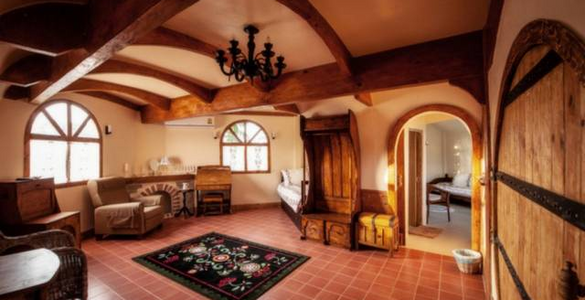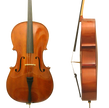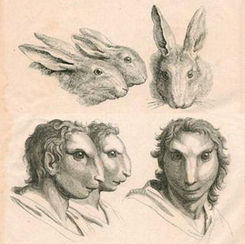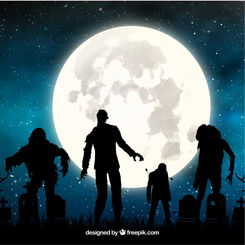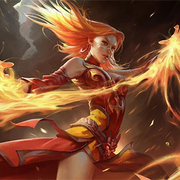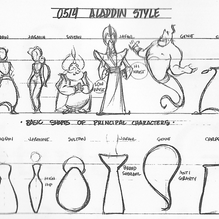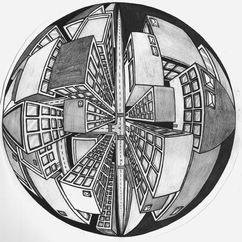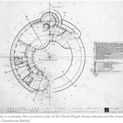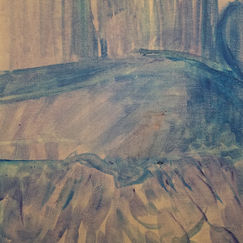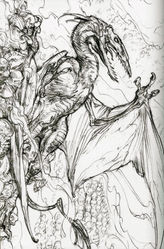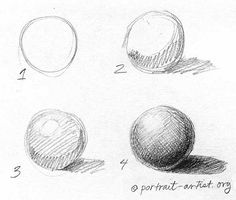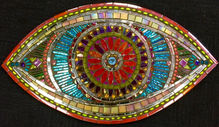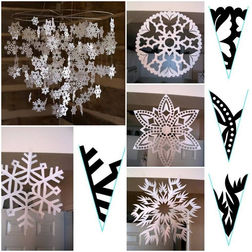ARTISTS AT WORK
Project IDEAS
Drawing Pets
Artists have enjoyed the soothing and therapeutic effects their pets have had in their lives and work. A studio without a cat, dog or even a hawk is a lonely one. From Luis Wain and his ‘cat society’ to Frieda and her array of creatures, the following pets have a place in art history!
ACTIVITY
find a photo of your pet or favorite animal
start sketching using the basic shapes shown in the tutorial

NOW YOU TRY!!

Drawings of animals
by historically famous artists


DRAWING Interior Design
What is Interior Design?
Interior designers make interior spaces functional, safe, and beautiful for almost every type of building by determining space requirements and selecting essential and decorative items, such as colors, lighting, and functional materials.
Activity 1- Show and tell 3 interiors you
feel you would like to live in. (can be from a movie)
Activity 2- Create your own imaginative interior based on what you like

This is what I like. I would like to build a fancy Yurt some day.

Here is a link to 20 famous interior designers working in the industry right now
List of Design Schools in CA

DRAWING Mythical Weapons

DRAWING Magical Creatures

-
Archimedes Death Ray
-
Thor's Hammer
-
God Poseidon's Powerful Trident
-
Giant Balor's Powerful Beam "Flux of Energy
-
The Spear of Lugh "Shining One"
-
Miraculous Rod of Moses
-
Powerful Thunderbolt of Zeus
-
Mysterious Powerful Vajra
-
Magical "Excalibur" Sword of King Arthur

DRAWING FOOD
Wayne Thiebaud

Wayne Thiebaud was born November 15, 1920 in Mesa Arizona. He is an American painter known for his colorful works depicting commonplace objects—pies, lipsticks, paint cans, ice cream cones, pastries, and hot dogs—as well as for his landscapes and figure paintings. Thiebaud is associated with the pop art movement because of his interest in objects of mass culture, although his early works, executed during the fifties and sixties, slightly predate the works of the classic pop artists. Thiebaud uses heavy pigment and exaggerated colors to depict his subjects, and the well-defined shadows characteristic of advertisements are almost always included in his work
He went to school, lived and worked in California since he was a child growing up mostly in Long Beach CA graduating from Long Beach High School. MORE ABOUT WAYNE THIEBAUD HERE.

DRAWING MUSICAL INSTRUMENTS

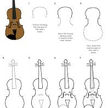

Spring is here!





In honor of Black History Month we will explore and discover works of art created by black artists
Example of the collage work of African American Artist Romare Bearden

Collage by Romare Bearden
"Black Venus"
and "Soul Three"

Music Written by Romare Bearden and recorded by Branford Marsalis

What is a collage?
A collage is an assortment of images or objects that you can put together to illustrate a theme, person or concept.
MATERIALS:
Collage
images, printed out, scissors, poster board or cardboard from an old cereal box, glue or tape, markers
Shadowbox
shoe box, old wooden picture frame, object you want to shadow, images you want to shadow, glue, tape scissors, pipe cleaners or jewelry wire and wire cutting tools. assortment of acrylic paint
Pet Collage
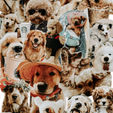
Assemblage Art

Shadow Boxes
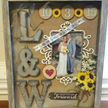
HOW TO DO IT

In honor of our Holiday Presidents Day, we will create a
Presidents Day Homage Collage
What is a collage?
A collage is an assortment of images or objects that you can put together to illustrate a theme, person or concept.
Presidents' Day is a federal holiday celebrated on the third Monday in February;
Presidents' Day 2021 will occur on Monday, February 15.
OR
You can choose to create a collage about any famous person
family member, pets, or friends.
Just be ready with images, scissors, and glue.
OR
Shadowboxes are also a kind of Collage
If you want to create a more multidimensional work of art, find some old shoe box or thick cardboard box or old wooden picture frame. We will assemble your images and objects using wire, glue and paint. This technique is also called Assemblage. Assemblage is art that is made by assembling disparate elements – often everyday object.
OR
You can choose to create a collage in a design program also, just find photos on line and assemble in a program like Photoshop
Drawing Superheroes
Practice drawing superheroes and then pick a friend or family member, or yourself to draw as a superhero

Spooky, Weird and Wild Project

OR
Spooky Landscapes
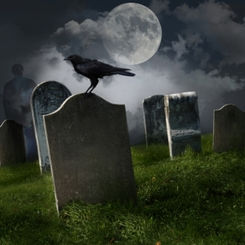
GAME Design
What is GAME Design?
Game design is a subset of the field of video game development. Game designers take the creative lead in imagining and bringing to life video game stories, characters, gameplay, rules, interfaces, dialogue and environments. This being the case, a game designer is a cross between a writer, artist and programmer.

ANIMATION
12 Principles of Drawing for Animation
-
Squash and Stretch
-
Anticipation
-
Staging
-
Straight Ahead Action and Pose-to-Pose
-
Follow Through and Overlapping Action
-
Ease In, Ease Out
-
Arcs
-
Secondary Action
-
Timing
-
Exaggeration
-
Solid Drawing
-
Appeal
1. Squash and Stretch
Squash and Stretch (S&S for short) is the principle of applying a contrasting change of shape—from a squash pose to a stretch pose or vice versa—to give a feeling of fleshiness, flexibility, and life in animation. The absence of squash and stretch gives a rigidity or stiffness to the motion.

2. Anticipation
Anticipation is the preparation for an action such as a jump or a punch. For example, a character will squat down before pushing his body and legs up into a jump. The stronger the anticipation motion, the more cartoony and fluid the animation will be.

3. Staging
Staging is the presentation of an idea so that it is completely and unmistakably clear. Readability. An action is staged so that it is understood. To stage an idea clearly, the audience's eye must be led to exactly where it needs to be at the right moment

4. Straight Ahead Action and Pose-to-Pose
Straight Ahead Action and Pose to Pose refer to the two drawing processes applied by animators. Straight Ahead Action is the drawing out of a scene frame by frame from start to finish, whereas in Pose to Pose the action is planned out by the animator using a few key frames and then the intervals are filled in
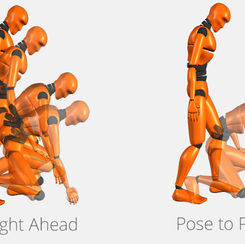
5. Follow Through and Overlapping Action
Follow through and overlapping action are closely related techniques which, when applied to animation, can help to render movement more realistically by more closely obeying the laws of physics.
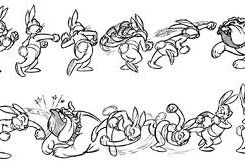
6. Ease In, Ease Out
In classic animation, the term for motion that starts slowly and accelerates is "slow in," and for motion that starts quickly and decelerates is "slow out." The terminology most commonly used on the web for these are “ease in” and “ease out,” respectively.
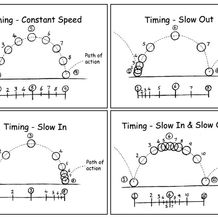
7. Arcs
The visual path of an object or action is called an “arc”. This could be the projectile of a bouncing ball, the path of a moving arm, and even the movements of mouth corners during a dialogue scene

8. Secondary Action
A secondary action is an action that results directly from another action. Secondary actions are important in heightening interest and adding a realistic complexity to the animation.
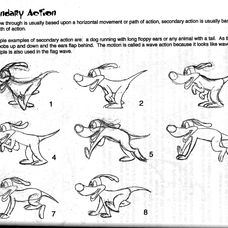
9. Timing
The timing comprises many things in animation. It is the duration of an action. It is the speed and velocity of an action. It is the way actions overlap and secondary objects follow the main action. ... The timing will be used to influence the speed and rhythm of the movement.
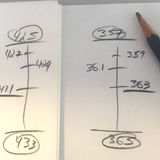
10. Exaggeration
Exaggeration is an effect especially useful for animation, as animated motions that strive for a perfect imitation of reality can look static and dull. The classical definition of exaggeration, employed by Disney, was to remain true to reality, just presenting it in a wilder, more extreme form.
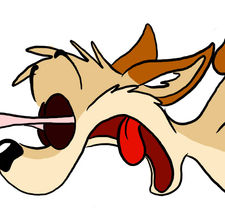
11. Solid Drawing
Solid drawing is the animation principle which makes the drawing looks Three dimensional and believable with Volume, Weight and Balance. This requires the knowledge of drawing a subject three dimensionally. With Solid drawing you will able able to draw figure from any side, which will help in animating your drawing.
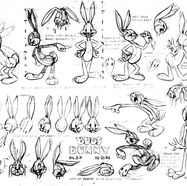
12. Appeal
In animation, artists use the Appeal principle to create interesting characters that appeal to the audience. Appealing animation doesn't mean making everything fluffy and cute but creating a clear visual design that will capture the audience's interest.

Disney Test Animation reels
Perspective Drawing
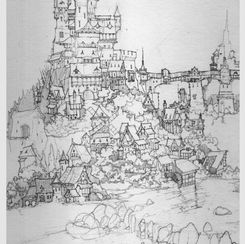

HISTORY of Perspective
The first known picture to make use of linear perspective was created by the Florentine architect Fillipo Brunelleshi (1377-1446). Painted in 1415, it depicted the Baptistery in Florence from the front gate of the unfinished cathedral. The linear perspective system projected the illusion of depth onto a two dimensional plane by use of ‘vanishing points’ to which all lines converged, at eye level, on the horizon. Soon after Brunelleshi’s painting, the concept caught on and many Italian artists started to use linear perspective in their paintings.
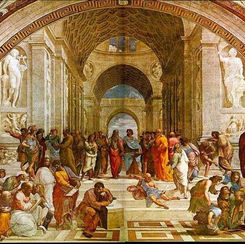
By the late 15th Century, artists were in total command of perspective and were able to create in their art a beautiful and realistic world. The great painters of the time were using the system first created by Brunelleschi to wonderful effect.
Underlying these changes in artistic method and the use of perspective was a renewed desire to depict the beauty of nature, and to unravel the axioms of aesthetics, with the works of Leonardo, Michelangelo, Raphael, Botticelli, Donatello and Titian representing artistic pinnacles that were to be much imitated by other artists.
3 points of perspective

4 and 5 points of perspective

Antoni Gaudi
ART and Architecture
Frank Lloyd Wright

Frank Lloyd Wright was a modern architect who developed an organic and distinctly American style. He designed numerous iconic buildings such as Fallingwater and the Guggenheim Museum.

Taliesin West- Frank Lloyd Wright School of Architecture, Arizona
Click this photo and learn more about this school

Link to Bio
Antoni Gaudí was a Barcelona-based Spanish architect whose free-flowing works were greatly influenced by nature.
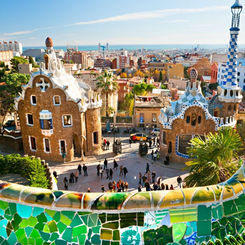
I.M. Pei

Link to Bio
I. M. Pei was one of the most renowned architects of the 20th and early 21st centuries, known for signature projects such as the Louvre Pyramid and the National Gallery of Art's East Wing.

Drawing and PHOTOGRAPHY

1. Find a photograph that you like on line or take a photo.
2. Change it in some way in the manner of the examples.
Landscapes, Seascapes, Sky-scapes
A landscape painting or drawing refers to an artwork whose primary focus is natural scenery, such as mountains, forests, cliffs, trees, rivers, valleys, etc. For instance, a landscape painting can be created in an abstract manner, in which the imagery is imbued with a deeper spiritual meaning. Landscape paintings also aren't necessarily limited to depictions of land. For example, they can also include images of seascapes, clouds-capes, skys-capes, rivers-capes, or citys-capes (otherwise known as "urban landscapes"). The main unifying element of any of these -scape artworks is that they all center around some kind of scenery.
FAMOUS LANDSCAPES

Use one of your own landscape photos
or
Pick a photo and start drawing
LANDSCAPE step by step tutorial

The basic steps to drawing a landscapes are:
1. Find a natural scene or photo of a natural seen.
It can be sky, mountains, trees, water, lakes.
2. define the horizon line
define the foreground, middle ground and background
3. Block out the basic shapes of the natural scene.
4. Refine the outlines or contour lines
locate the light source (sunlight or moon light)
5. start using directional shading , look for cast shadows, highlights, create volume
6. Start defining the textures define details
7. Put on the finishing touches
Use any of these for your inspirational reference
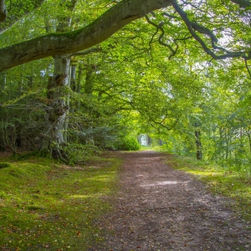
MORE: Short Landscape/Seascape Tutorials
Pattern, Texture and Geometry in Art
What is a Zentangle?
The Zentangle Method is an easy-to-learn, relaxing, and fun way to create beautiful images by drawing structured patterns. We call these patterns, tangles. You create tangles with combinations of dots, lines, simple curves, S-curves and orbs. These simple shapes are the "Elemental Strokes" in all Zentangle art. These patterns are drawn on small pieces of paper called "tiles." We call them tiles because you can assemble them into mosaics.
Link to More info
What is a Zentangle?
You may want to trace a plate or make a circle as a guide
What is a Phicops in a circle?
Here are a few we did in another class with color

Texture Drawing Ideas to try
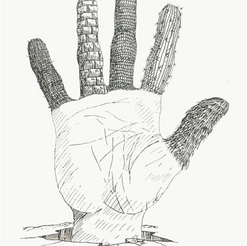

Drawing Dragons
Frank Frazetta
Ian McCaig

Drawing dragons is a multi-layered venture.
If you look to nature you will find parts of dragons in a variety of different animals-
lizards, bats, birds, snakes and even dogs. Below I have attempted to create exercises to help you improve your dragon drawing skills. First we will start with what we can find in nature and then move to more fantasy creatures.
But before we do that I would like to introduce you to two of my favorite fantasy artists. One of them I happen to have met and studied with at Cogswell College. His name is Ian McCaig.
Cogswell College happens have a dragon mascot and we were called the Cogswell Dragons and the logo for this college is a dragon. This is where I met and attended many lectures with Ian McCaig.
Ian McCaig, famous illustrator was a regular guest artist and teacher at Cogswell College, and he has illustrated a few dragons.
Ian McCaig is an American artist, writer, and filmmaker. He was involved in the Star Wars franchise and many other iconic film and book projects.
Star Wars characters Padmé Amidala and Darth Maul and has contributed key designs to many of the films in the Star Wars franchise, including Episodes I, II, III, and VII. Among his other credits are Terminator 2, Hook, Interview with the Vampire, Bram Stoker's Dracula, Charlotte's Web, Peter Pan, Harry Potter and the Goblet of Fire, The Spiderwick Chronicles, John Carter of Mars, The Avengers, Guardians of the Galaxy, and The Jungle Book. He was also Co-Producer and Concept Design Director for Outlander.
Another noteworthy artist in the field of Fantasy Art is Frank Frazzetta. He illustrated using mostly with oil paint. Frank Frazetta was an American fantasy and science fiction artist, noted for comic books, paperback book covers, paintings, posters, LP record album covers and other media. He is often referred to as the "Godfather" of Fantasy Art, and one of the most renowned illustrators of the 20th century. If you click on his self portrait you can find out more.
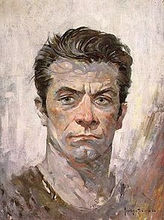
Dragons are a composite of animals

Dragon Drawing Exercises


Drawing Portraits and Self Portraits
Famous Self Portraits

Proportions
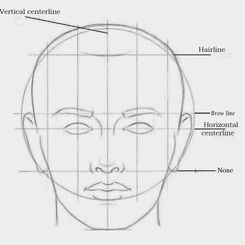
Half Portrait Project Alternative
1. Take a photo of yourself looking straight at the camera or phone.
2. put it on a google doc or any printable format
3. print it out in black and white or color
4. cut the print in half
5. tape it down to a piece of drawing paper
6. leave room to draw on the other side
7. now draw the best you can to complete your self portrait
Half Portrait Project


Value and Art
Shading, Value and Tone
Who was Georgia O'Keeffe?
Georgia O'Keeffe is one of the most significant artists of the 20th century, renowned for her contribution to modern art. Born on November 15, 1887, the second of seven children, Georgia Totto O'Keeffe grew up on a farm near Sun Prairie, Wisconsin. She lived to be 99 years old and passed away in 1986.
O'Keeffe is mostly known for incorporating subtle images of light and shadow within her paintings, from the flower petals to even the backgrounds of landscapes. And she has even been credited as being the mother of American modernism – an accolade that has been downplayed because of her gender.
How she used value, line, color, and composition—the essence of what makes an O’Keeffe an O’Keeffe.
She works in a variety of media, including pastel, charcoal, watercolor, and oil, O’Keeffe utilized these essential elements of art-making in a career spanning more than six decades. MORE about Georgia O'Keeffe

Shading, Value and Tone
Exercise 1
Shading, Value and Tone. Value is the art element that refers to light and dark. Artists use value to create the illusion of a three dimensional form. If one wants to take a circle and make it a form, one must use Shading Value and Tone to give it the illusion of depth.
The bar at the bottom of this sphere is called a tonal scale or value scale. Sound like musical terminology, right?
We will convert a basic shape into a basic form but using shading value and tone like the example below.
This can be index card size, 4x6. Best to be drawn on an index card.
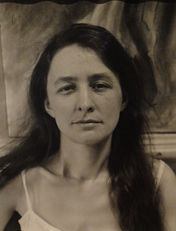
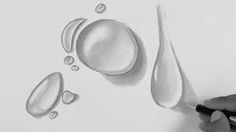
Shading, Value and Tone
Exercise 2
1. Find a natural object
Fruit, flower, leaves, stones, plants, water droplets
2. Start to draw using a pencil outline the basic shapes very lightly.
3. Find the light source and the shadows,
look for all of the gradients that make up the forms
4. Fill in gradual tones
5. Now that you are an expert, you can draw on a larger sheet of paper.
look for all of the gradients that make up the forms
HAVE FUN!!
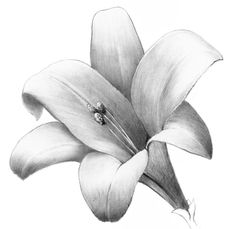
Abstract Art and Contour Line
Who is Pablo Picasso?
Born October 25th, 1881 in Málaga, Spain.
He lived until April 8, 1973.
Pablo Picasso was a Spanish painter, sculptor, print-maker, ceramicist and stage designer considered one of the greatest and most influential artists of the 20th century. Picasso is credited, along with Georges Braque, with the creation of Cubism.
What Makes Him Unique? He is unique because developed his own unique style. This style, mainly cubism, does not depict realism in its images. Instead, it leaves the viewer slightly confused and sometimes, shocked.
Pablo Picasso was once accused and questioned by authorities when the Mona Lisa, a painting by Italian artist Leonardo da Vinci was stolen from the Louvre.
As it turns out an Italian employee stole the painting because he thought it belonged in Italy not at the Louvre in France. Picasso lead a very long and interesting life, find out MORE about Pablo Picasso.
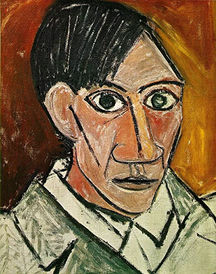
What is a Contour Drawing?
Contour Drawing is a version of outline drawing, in which the artist, looking closely at the contour of an object, transfers it in one continuous line to paper.
Blind Contour Drawing is doing the same without looking down to see what the artist is doing, except when the artist needs to place an internal feature such as an eye.
Continuous Contour Line Drawing is doing the same and do not pick up your pen.
TIP: draw slowly with a fat marker on a plain or color piece of paper. Keep your pen down and do not pick it up.
Step by step:
We are going to create a
Blind Contour Continuous Line Drawing PORTRAIT
1. try a small version 5x7 by drawing your hand
do not look at the paper
2. use a thick marker
3. do not pick up the marker from the page
4. GREAT!
NOW that you have practice-
try a larger piece of paper, thicker card stock or poster board would be great, even color construction paper will work for this.
Now you can draw:
-
yourself
-
your family member
-
one of the club members here on line
-
your teacher here on line

THE EYE
What is a MOSAIC?
a surface decoration made by inlaying small pieces of variously colored material to form pictures or patterns
MOSAIC EYE
Objective:
Complete each step to produce an
Eye Window
or
Eye Mosaic project
Tools Needed:
-
scissors
-
1 sheet of cardboard or card-stock or cardboard-any color
-
color paper variety
-
color pencils or any color media
-
reflective paper, bling, beads etc
Step 1.) Begin by outlining the major shapes in your design. This would include the outside of eye, eyebrow, and pupil.
Step 2.) Find a way to incorporate other ideas into your eye drawing. You can replace the iris, eyelashes, pupils, etc…
Step 3.) Add color to your final drawing, along with shading and values. This eye should be a window to you and what you enjoy! You can use reflective papers, bling, beads etc
Or try the Eye Window Project
EYE WINDOW PROJECT
Brainstorm ideas of themes to incorporate into your design.
Examples would be places, objects, or activities you love.
Create a shape of an eye, you can use a mirror and draw your own eye or a friends' eye.
Illustrate inside and outside of the eye with the places, objects or activities you love.
see the examples >>>>>>>
you can also use other objects to enhance your eye mirror project: reflective papers, bead, mirrors etc
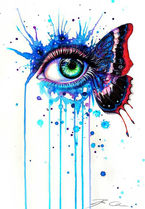
What is Surrealism?
Surrealism is a 20th-century avant-garde movement in art and literature which sought to release the creative potential of the unconscious mind, for example by the irrational juxtaposition of images.
Who was René Magritte?
René Magritte was a Belgian-born artist who was known for his work with surrealism as well as his thought-provoking images. After attending art school in Brussels, he worked in commercial advertising to support himself while he experimented with his painting. In the 1920s, he began to paint in the surrealist style and became known for his witty images and his use of simple graphics and everyday objects, giving new meanings to familiar things. With a popularity that increased over time, Magritte was able to pursue his art full-time and was celebrated in several international exhibitions. He experimented with numerous styles and forms during his life and was a primary influence on the pop art movement.
Rene Magritte is known for creating witty images that stimulated careful consideration from viewers. He often used familiar images or objects but presented it in an unusual context, thus challenging the audience's preconditioned concept of reality
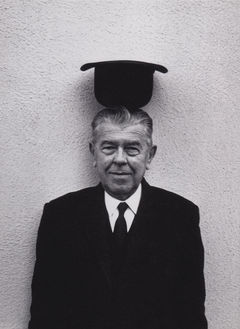
Holiday Gifts, Decorations and Ornaments
Do you have gifts to give your family, friends and neighbors? Do you have an area to decorate in your home?
Do you have extra junk and a hot glue gun in your house?
For this arts club session you will research an arts and crafts holiday decoration project and demonstrate it to your fellow club members. Get your supplies ready so show and create.
Supplies list
JUNK
Things that have been
broken that can be repurposed
Hot glue gun or other glue
yarn
quality paper or cardstock
popsicle sticks
paints
ribbon
thread
buttons
needle
paper
buttons
scissors

In honor of Chinese NEW YEAR we will explore and discover works of art created by Chinese Artists:




















